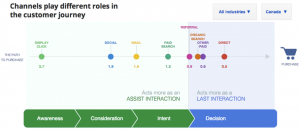— March 15, 2018

shy_kurji / Pixabay
Without employees, you have no customer experience.
It all started with a tweet… (to the left)
My response was: “That’s a blog post on its own! Too much for 140 characters! But definitely need to start with listening to them.”
There’s a whole alphabet soup of terminology around the various states of the employee relationship with the company, so let me start off by defining a few of them. There are differences.
Gallup says that engaged employees “stand apart from their not-engaged and actively disengaged counterparts because of the discretionary effort they consistently bring to their roles. These employees willingly go the extra mile, work with passion, and feel a profound connection to their company. They are the people who will drive innovation and move your business forward.”
Employee engagement happens when there is some confluence of (1) emotions, commitment, passion, sense of ownership, etc. on the part of the employee about the brand and (2) what the organization does (mission, purpose, brand promise, etc.) to facilitate and enhance those emotions or that commitment.
Employee satisfaction refers to how satisfied your employees are (no surprise); it doesn’t address or include motivations or emotional commitment like employee engagement does. Some employees are satisfied simply because they get a paycheck or because they have a job. That doesn’t tell us how committed they are to the brand, to the job they do, or to the experience they deliver.
Employee happiness is a function of engagement and satisfaction. I’m satisfied with my job and am committed to the brand, which is committed to me; therefore, I am happy. It’s an emotional part of the equation and conveys contentment, energy, and enthusiasm.
OK, on to the good stuff.
Without a doubt, the employee experience drives the customer experience. There’s this concept called the spillover effect, which is described as the tendency of one person’s emotions to affect how other people around him feel. How do you ensure that your employees are engaged and happy so that they can deliver the experience that you expect them to and, in turn, yield happy and engaged customers?
Let’s start with some of the basics. Employee engagement isn’t about free food, beer Fridays, ping pong, and perks. They might make your time at work more fun, but they will not/do not drive your engagement. They may ease the pain of the stress, frustration, and long hours, but they don’t make you feel committed or feel some sense of ownership toward your employer and the brand.
Remember that employee engagement is about some confluence of emotions and commitment between employer and employee. So, each is party to employee engagement.
What Can Employers Do?
What is the employer’s part in this equation? It’s all about creating the right conditions to allow employees to become engaged. Those conditions include:
- Hiring the right people for the right roles
- Clearly communicating the mission, vision, purpose, and values of the organization
- Living and breathing the mission, vision, purpose, and values
- Listening to employees, hearing what they say, and acting on what you hear
- Communicating openly and being transparent about company goals and performance allows employees to be more deeply invested in the company
- Ensuring employees know how they contribute and how their contributions matter
- Setting expectations and providing the right tools and resources for employees to meet those expectations
- Creating a culture where employees come first
- Ensuring employees are well taken care of, which includes tools, training, coaching, development, feedback, recognition, respect, appreciation, trust, balance, and more
- Breaking down silos and be all-inclusive, e.g., the same experience from department to department, business unit to business unit
- Leading by example; leadership should be role models for how they expect employees to act and to behave
- Empowering employees and giving them control of their day-to-day decisions and roles
What Can Employees Do?
Employees obviously have ownership in this thing called engagement, as well: it starts with them; it comes from within them. Their role in becoming engaged includes:
- Accepting a position for the right role in the right company
- Being passionate about what they do and for whom they do it
- Having a shared purpose and feeling like they belong to something bigger than themselves
- Taking ownership, thinking and acting like they own the business
- Being responsible for driving their own development and career path (which will be supported by the employer, as noted above)
- Understanding the mission, vision, purpose, and values of the organization and ensuring alignment with all of them
- Providing feedback to drive business success
- Providing feedback about your role, your work, your happiness, etc.
- Collaborating with co-workers to advance the business, to innovate, to develop new products and offerings, etc.
- Working day in and day out toward the goals of the business
- Understanding how their work ties to business outcomes
- Coming to work every day ready to give their all
- Stamping out gossip, office politics, and other things that make for a toxic environment
Why is this all important?
Besides the obvious reasons, engaged employees are more productive, stay longer, and want to see the business succeed – and they provide feedback and put forth the effort to make sure that happens. They drive customer happiness and loyalty, and ultimately, they drive the customer experience. Kevin Kruse has dubbed the following the Engagement-Profit Chain:
Engaged employees lead to…
- Higher levels of service, quality, and productivity, which lead to…
- Higher customer satisfaction, which leads to…
- Increased sales (repeat business and referrals), which lead to…
- Higher profits, which lead to…
- Higher shareholder returns (i.e., stock price)
Making sure employees are engaged and happy is good for employees, customers, and the business. What are you waiting for?
Highly engaged employees make the customer experience. Disengaged employees break it. -Timothy R. Clark
Business & Finance Articles on Business 2 Community
(45)
Report Post








